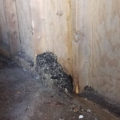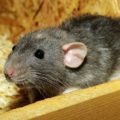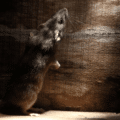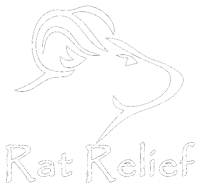Table of Contents
We are fortunate to live in a diverse world and are luckier to be sharing it with various species of animals and plants, many of which are beneficial to our survival. There are, however, some species that interfere with human activities and property. Still, the number of pests that negatively affect human lives makes up less than one percent of animal and insect species’ total population.
More than Just a Nuisance
Among all the pests, human beings have to contend with, rodents, rats specifically, top the list. Not only do these stinky, vile, and filthy varmints damage your property and invade your space, they also threaten your health because of the various diseases they bring.
Every year, rats and other rodent species consume about ten percent of the entire world’s food supply. Aside from eating through your food supply, these pesky critters also contaminate the world’s food source with their urine and fecal waste. Fortunately, pest control has been invented, allowing people to ward off some of the damage rats and their relatives bring. Without pest control, the world would be losing half of its food reserves to these four-legged pillagers year in and year out.
Rats are burrowers by nature and can be found in places that conceal them from sight. That said, they can be found in many homes, farm fields, livestock pens, stables, grain mills, corncribs, warehouses, and even supermarkets and restaurants. Largely nocturnal, rats, and their rodent relatives come out mostly at night to look for food. They do not have to look far, though, as these despicable pests will happily partake of anything that you and your pets eat.
Food Poisoning and Contamination
In 2010, the United States Centers for Disease Control and Prevention (CDC) reported that food poisoning causes about 3,000 deaths, 128,000 hospitalization cases, and 48 million annually in the United States alone.
While food contamination can occur at any time during its production, substandard, unsanitary conditions and the proliferation of rats, rodents, and other pests in facilities that handle food have a significant contribution to food spoilage. This is why pest management is of utmost importance, no matter how challenging it can be. It does not matter whether the warehouse or the food facility is big or small; a lack of proper pest control can result in disastrous outcomes.
Everyone involved in the food manufacturing industry, as well as consumers themselves, are not at all unfamiliar with food contamination scenarios that have caused various illnesses and even deaths, forcing food manufacturers to recall their products from grocery, supermarket and store shelves.
The Outcome of Neglect
If you still remember, one of the biggest and costliest food recalls in the United States happened in January of 2009, after the U.S. Food and Drug Administration discovered and confirmed the contamination of the peanut-based products of the Peanut Corporation of America (PCA). The products were found to be contaminated with Salmonella in 2007 and 2008, which is clearly a violation of the food processing standards set by the USFDA. This act of negligence caused an outbreak, with 700 reported cases of food poisoning and nine deaths – all across 46 states in the country. Of course, the only outcome of this is bankruptcy for the company, plus multiple lawsuits.
Like the PCA, facilities must be conscientious and meticulous in managing pest control since food processing environments present ideal conditions for pest infestation.
How Rats Contaminate Food
Rodents, especially roof rats and brown rats, find a haven in food facilities. There is plenty of food, a continuous water supply, and many hiding spaces where they can nest and breed. As the family of rats grows in size, they become more aggressive in scavenging for more food.
While rats like cleaning their coat, they do not bathe; therefore, they become moving carriers of germs and bacteria like E-coli and Salmonella. Rats eat with their paws, so they leave behind morsels and crumbs of their food, therefore, contaminating the rest of the food – even if they ate only a piece of a loaf of bread, you could expect the rest of the loaf to be full of their germs.
Rats urinate and defecate wherever and whenever they want, and that can include the slice of cheesecake you were reserving for dessert. Rats and other rodents are also highly territorial, marking their food with urine. So, if you are tempted just to cut off the piece of carrot with a nibble on it, don’t, unless you want to get sick.
That piece of cheese gets contaminated as soon as the rat sinks its teeth into it, leaving the germs it carries in its mouth in that yummy piece of cheddar. Tempting, yes, but not safe.
Managing Rats and other Pests
There is only one solution to the rat problem in food facilities: effective pest management. However, some food companies tend to be lax in their commitment to controlling pests effectively. In the hustle and bustle of everyday operations, pest management can take the backseat. However, it is critical for all food facilities to plan and implement regular inspections, pest-proofing measures, and a concrete and immediate pest eradication plan as soon as an infestation is discovered.
Food facility owners and managers must work together to ensure that their facility is free of pests, ensuring that the food stored and prepared in their facility is safe and free from contamination.





